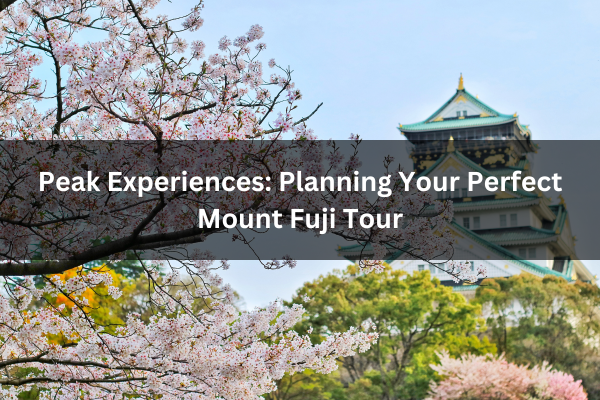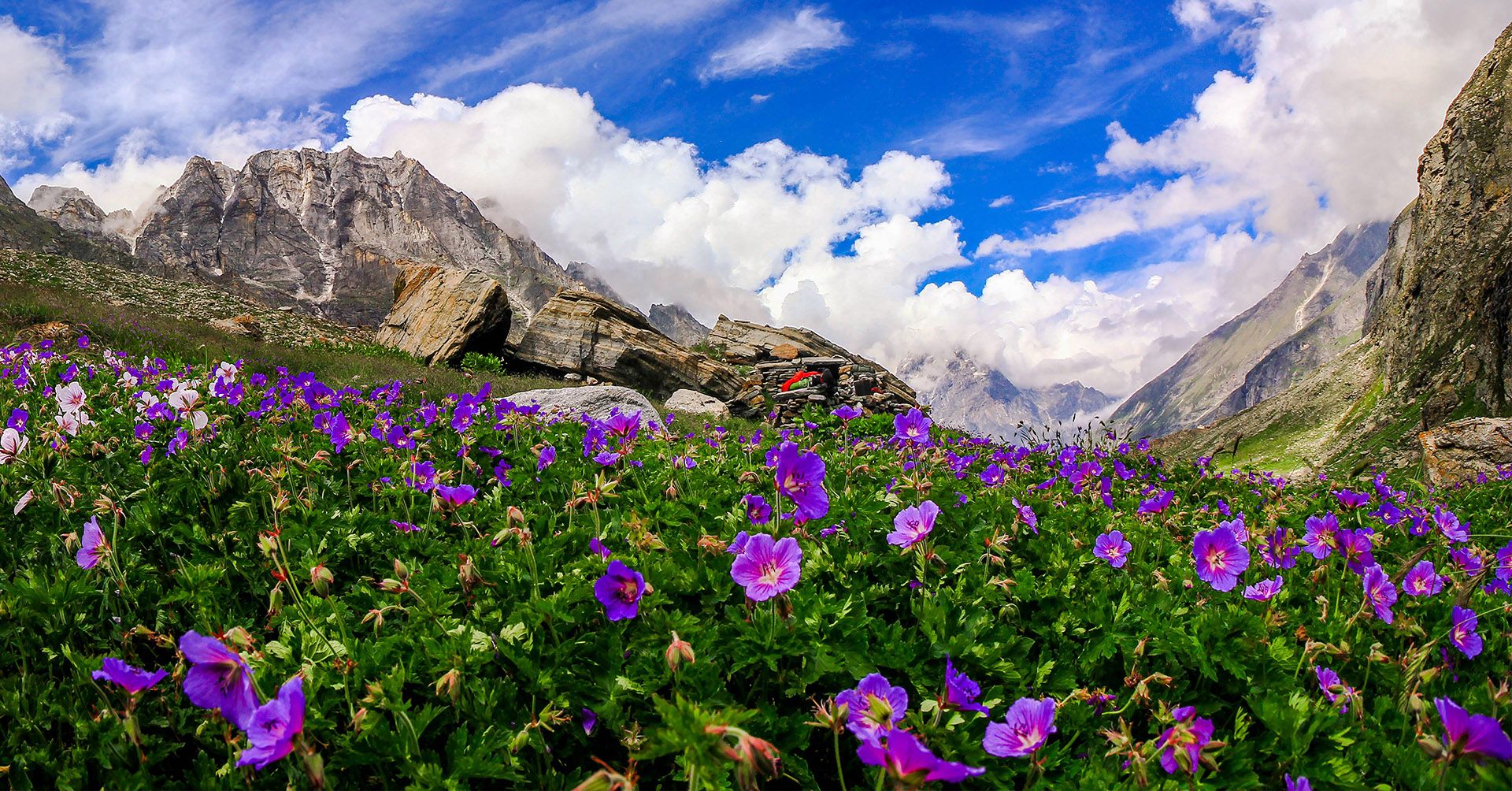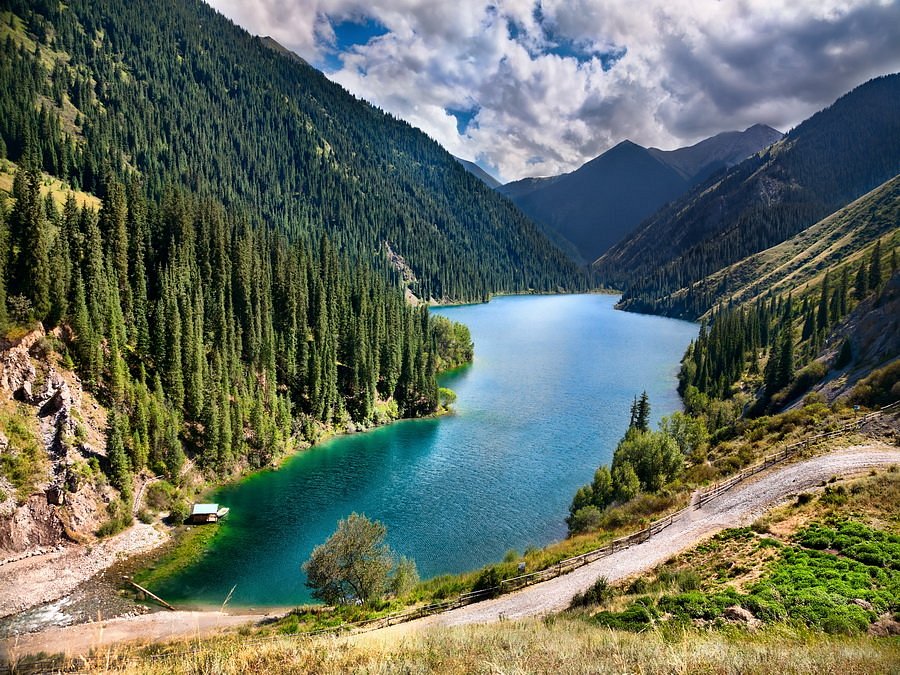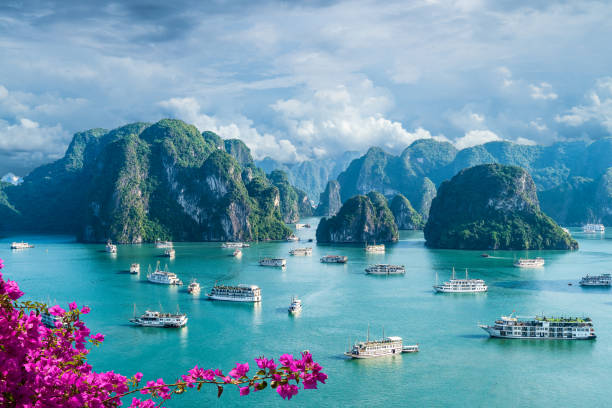



Introduction
The primary goal of the blog is to provide readers with comprehensive information and insight that will empower them to plan a Mount Fuji Adventure that suits their preferences, interests and expectations. This educational focus ensures that readers have a solid understanding of what to expect when visiting Mount Fuji, allowing them to make informed decisions during the planning process.
Historical and cultural significance: Exploring Mount Fuji tour importance in Japanese culture and spirituality.
1. Cultural Symbolism in mount fuji tour:
Mount Fuji Japan is an iconic symbol of Japan, representing the country’s natural beauty, resilience and cultural heritage. Its perfectly symmetrical conical shape and snow-capped peak have been immortalized in countless works of art, literature and poetry, making it one of the most recognizable symbols of Japan both domestically and internationally.
2. Spiritual Significance:
Mount Fuji holds deep spiritual significance in Japanese culture, particularly in the context of Shintoism, Japan’s indigenous religion. In Shinto belief, natural features such as mountains, forests, and rivers are often revered as kami, or spirits, imbued with divine significance. Mount Fuji is considered a sacred site where kami reside, and pilgrims have long journeyed to its summit in search of spiritual purification, enlightenment, and blessings.
3. Pilgrimage Tradition:
Mount Fuji Japan has been a destination for pilgrims for centuries, with devotees making arduous journeys to climb its slopes and pay homage to the spiritual essence of the mountain. Pilgrimage routes, known as Fujigoko (Fuji Five Ways), historically served as routes for pilgrims, taking them to various sacred sites around the mountain, including temples, shrines, and sacred springs.
4.Cultural Practices:
The spiritual significance of Mount Fuji tour is reflected in various cultural practices and rituals associated with the mountain. These include rituals performed by Shinto priests to honour the kami of Mount Fuji, as well as traditional festivals and celebrations held at the base of the mountain and surrounding areas. Additionally, Mount Fuji has inspired artistic and literary expressions throughout Japanese history, from ancient poetry and paintings to contemporary literature and cinema.
5.Modern Respect:
Despite advances in technology and changes in social values, Mount Fuji holds a revered place in Japanese culture and spirituality. Every year, thousands of pilgrims and tourists come to the mountain to experience its beauty, participate in cultural activities and connect with its spiritual essence. The enduring significance of Mount Fuji Excursion is a reminder of Japan’s rich cultural heritage and the eternal bond between nature, spirituality, and the human experience.
Geographical features: Understanding the mountain’s unique characteristics and surrounding landscapes About Mount Fuji Tour.
1.Physical Features for mount fuji tour:
Mount Fuji is a stratovolcano located on Honshu, Japan’s largest island. Its elevation is 3,776 metres (12,389 ft) above sea level, making it the highest peak in Japan. The mountain is characterised by its symmetrical conical shape, composed of layers of hardened lava, volcanic ash and volcanic rocks. Its snow-capped peak, known as “Fuji-san”.
2.Climatic conditions in Mount Fuji Tour:
Mount Fuji exploration geographical location and altitude influence its climatic conditions, resulting in varying weather patterns throughout the year. The mountain experiences cold temperatures and heavy snowfall during the winter months, making it a popular destination for winter sports enthusiasts. In contrast, the summer months bring warm temperatures and clear skies, making it an ideal time for hiking and outdoor activities.
3.Ecological Diversity:
Mount Fuji and its surrounding landscapes are home to a rich diversity of plant and animal species adapted to the mountain’s unique environmental conditions. Alpine vegetation including wild flowers, mosses and lichens thrive at higher altitudes, while pine, cedar and beech forests flourish in the lower foothills. The area also supports a variety of wildlife, including deer, bears, and several bird species.
Seasons and weather: Discussing the best times to visit Mount Fuji tour and considerations for weather conditions.
Seasonal Variation in Mount Fuji Tour:
Mount Fuji expedition experiences distinct seasonal changes, each of which presents unique opportunities and challenges for visitors. Understanding these seasonal changes can help travellers plan their trips effectively.
- Spring (March to May):
Spring is a popular time to visit sightseeing Mount Fuji visit , as the snow begins to melt, and the surrounding landscape comes alive with vibrant colours. Cherry blossoms bloom in April, creating picturesque views around the mountain. However, weather conditions can be unpredictable, with snowfall sometimes occurring at higher altitudes.
- Summer (June to August):
Summer is the peak climbing season for Mount Fuji trip, with clear skies and warm temperatures making it ideal for hiking. The official climbing season runs from early July to early September, during which all mountain facilities are open, and guided tours are available. However, summer weather can be unpredictable, with sudden changes in temperature and the possibility of storms.
- Fall (September to November):
Fall brings mild temperatures and stunning fall foliage, making it another popular time to visit Mount Fuji. The surrounding forests turn into a kaleidoscope of red, orange and yellow, creating breath-taking views. However, autumn weather can be changeable, with occasional rain and cool temperatures.
- Winter (December to February):
Winter brings snow-covered landscapes and fewer crowds to Mount Fuji tour. Although it is possible to climb the mountain during winter, it requires special equipment and experience in winter mountaineering. The winter months also offer opportunities for snow sports such as skiing and snowboarding in the surrounding areas.
Consideration of weather conditions: When planning a trip to Mount Fuji tour
1. Visibility in Mount Fuji Tour:
Clear skies offer the best views of Mount Fuji Adventure and its surroundings. However, weather conditions such as fog, clouds, and mist can obscure visibility, limiting visibility of the mountain from observation points and hiking trails.
2. Temperature in Mount Fuji Tour:
Temperatures on Mount Fuji excursion can vary widely depending on the season and altitude. It is essential to dress appropriately for weather conditions, wear clothing to stay warm during cold temperatures and avoid sun exposure during the warmer months.
3. Precipitation in Mount Fuji Tour:
Rain, snowfall, and hail are common occurrences on Tour Mount Fuji, especially during the spring and summer months. It is advisable to check the weather forecast before travelling and be prepared with waterproof clothing and gear if there is a chance of rain.
4. Wind in Mount Fuji Tour:
Mount Fuji adventure is known for its strong winds, especially at higher altitudes. Windy conditions can make hiking more challenging and increase the risk of accidents and hypothermia. It is important to exercise caution when planning outdoor activities and take into account wind speed and direction.
5.Safety in Mount Fuji Tour:
In the event of adverse weather, it is important to prioritise safety and consider postponing outdoor activities or seeking shelter until conditions improve. Staying aware of weather forecasts and paying attention to any warnings or advisories issued by local authorities can help ensure a safe and enjoyable experience on Mount Fuji adventure.
Researching tour options is an essential step in planning a Mount Fuji tour.
- Guided Hikes:
Guided hiking tours are popular options for travelers who want to experience the thrill of climbing Mount Fuji while benefiting from the expertise and guidance of experienced mountain guides. These tours typically provide a structured itinerary, including transportation to the trailhead, accommodation arrangements, and guided ascent and descent of the mountain. Guided hikes offer the opportunity to learn about the mountain’s history, geology, and cultural significance from knowledgeable guides, as well as to meet other like-minded travelers along the way.
- Cultural Tours:
Cultural tours focus on exploring the rich cultural heritage and traditions of the Mount Fuji region beyond just climbing the mountain. These tours may include visits to nearby temples, shrines, and historical sites, as well as participation in cultural activities such as tea ceremonies, calligraphy workshops, and traditional performances. Cultural tours offer a deeper understanding of the local culture and provide opportunities to interact with residents and artisans, gaining insights into their way of life.
- Photography Excursions:
Photography excursions are tailored for travellers interested in capturing the stunning beauty of Mount Fuji sightseeing and its surrounding landscapes through their lenses.
These mount fuji visit are led by professional photographers or photography guides who provide expert advice on composition, lighting, and camera settings to help participants capture memorable images.
Photography excursions often take advantage of specific viewpoints and vantage points around Mount Fuji, offering opportunities for sunrise and sunset photography, long-exposure shots, and landscape photography.
- Customised/Private Tours:
Some tour operators offer customised or private tours tailored to the specific interests and preferences of individual travellers or small groups. These tours can be designed to accommodate special requests, such as personalised itineraries, private transportation, or exclusive access to certain sites or experiences. Customised/private tours offer flexibility and personalised attention, allowing travellers to create a Mount Fuji Pilgrims experience that is uniquely tailored to their needs and desires.
- Family-Friendly Tours:
Family-friendly tours cater to travellers with children and families, offering activities and experiences suitable for all ages. These tours may include kid-friendly hikes, nature walks, interactive workshops, and cultural activities designed to engage and entertain young travellers while providing opportunities for family bonding and exploration. Family-friendly tours typically prioritise safety, comfort, and accessibility, making them ideal options for families looking to experience Mount Fuji together.
Booking logistics are a critical aspect of planning a Mount Fuji tour.
1. Finding Reputable Tour Companies:
- Research:
Start by doing extensive research online to identify tour companies that specialize in Mount Fuji exploration. Look for companies with strong reputations, positive reviews from past customers, and certification or affiliations with recognized tourism organizations.
- Verify Credentials:
Verify the credentials and qualifications of tour guides and staff members to ensure they are knowledgeable, experienced, and certified to lead tours in the Mount Fuji adventure.
- Ask for recommendations:
Ask for recommendations from friends, family members, or online travel communities who have done Mount Fuji excursion before. Personal recommendations can provide valuable insight and help narrow down options.
2. Making a Reservation:
- Plan in advance:
Mount Fuji journey can be popular and fill up quickly, especially during peak climbing season. It is advisable to book your tour in advance to secure your preferred dates and avoid disappointment.
- Contact Mount Fuji visit companies:
Reach out to the tour companies you have identified to inquire about availability, tour options, and booking procedures. Provide them with your preferred dates, group size, and any special requests or requirements you may have.
- Confirm Details:
Once you have chosen a tour company and confirmed your booking, be sure to review the details of your reservation carefully. Double-check the itinerary, inclusions, exclusions, cancellation policies and payment terms to make sure everything meets your expectations.
3. Understanding Cost:
- Full cost breakdown:
Ask the tour company for a detailed breakdown of the costs associated with the Mount Fuji trip, including the base price, any additional fees or surcharges, and what is included in the package (for example, transportation, accommodations, meals, guide services).
- Hidden Fees:
Be aware of any potential hidden fees or unexpected expenses that may arise during the tour, such as equipment rental fees, entrance fees to attractions, or optional add-on activities. Make these clear in advance to avoid surprises.
- Payment Options:
Inquire about accepted forms of payment (e.g., credit card, bank transfer, cash) and any deposit requirements or payment deadlines. Make sure you understand the payment terms and have a clear understanding of when payment is due.
Packing essentials: A detailed checklist of clothing, gear, and other items necessary for a Mount Fuji tour.


1. Clothes:
- Layered clothing:
It is essential to dress in layers to keep up with the changing temperatures and weather conditions. Pack lightweight, moisture-wicking base layers, insulating mid layers, and waterproof outer layers.
- Insulated Jacket:
Bring a warm, insulated jacket to protect against cold temperatures, especially at higher elevations where it can be quite cold.
- Hiking pants:
Choose comfortable, quick-drying hiking pants with moisture-wicking properties. Consider convertible pants with zip-off legs for versatility.
- Moisture-wicking underwear and socks:
Pack moisture-wicking underwear and socks to keep your skin dry and prevent cracks and blisters.
- Gloves and Hat:
Bring light gloves and a warm hat to protect your hands and feet from the cold temperatures and wind chill.
2. Shoes:
- Hiking boots:
Invest in sturdy, supportive hiking boots with good traction and ankle support. Make sure your shoes are broken in and comfortable before the tour.
- Extra socks:
Pack extra pairs of moisture-wicking socks to keep your feet dry and comfortable throughout the tour.
3. Gear:
- Backpack:
Bring a durable, comfortable backpack to carry your essentials during the tour. Choose the appropriate size for the length and intensity of your Mount Fuji trip.
- Water bottle or hydration system:
Stay hydrated by bringing a refillable water bottle or hydration system with you. Be sure to drink plenty of water, especially at high altitude.
- Headlamp or flashlight:
Bring a headlamp or flashlight with extra batteries for hiking in low light conditions or during dawn or dusk hours.
- Sun Protection:
Pack sunscreen, SPF-rich lip balm, sunglasses, and a wide-brimmed hat to protect against sunburn and UV exposure.
- First Aid Kit:
Carry a basic first aid kit with the essentials like adhesive bandages, antiseptic wipes, pain relievers, blister treatment, and any personal medications you may need.
- Navigation equipment:
Bring a map, compass, or GPS device to navigate trails and make sure you stay on track.
- Camera or Smartphone:
Capture memories of your Mount Fuji visit by bringing a camera or smartphone with a camera feature. Consider bringing extra batteries or portable chargers to keep your devices powered.
4. Miscellaneous items:
- Snacks and energy foods:
Pack light, high-energy snacks like trail mix, energy bars, nuts, and dried fruits to fuel your trip.
- Emergency Shelter:
Consider bringing a lightweight emergency shelter such as a space blanket or bivy sack in case of unexpected weather or emergencies.
- Garbage Bags:
Pack small garbage bags to toss out any trash and leave no trace of your trip.
Photography tips: Advice for capturing stunning images of Mount Fuji Tour
1.Golden Hour Plan in Mount Fuji Tour:
The time just after sunrise and before sunset, known as the golden hour, provides soft, warm light that enhances the beauty of Mount Fuji adventure and its surroundings. Plan to shoot during these times for the best lighting and atmospheric effects.
2.Consider composition in Mount Fuji Tour :
Focus on composition techniques such as the rule of thirds, leading lines, and framing to create visually appealing images. Experiment with different viewpoints, angles and focal lengths to capture unique and dynamic compositions.
3.Including foreground elements:
Including foreground elements like trees, rocks, or water can add depth and interest to your photos, drawing the viewer’s attention to Mount Fuji tour in the background.
4.Use a tripod for Mount Fuji Tour :
Stability is essential to capturing clear images, especially in low-light conditions or when using slow shutter speeds. Use a tripod to stabilise your camera and reduce the risk of camera shake.
5.Adjust exposure:
Mount Fuji’s dazzling white snow cap can often cause exposure problems, leaving highlights overexposed or blown out. Use exposure compensation or manual exposure settings to adjust exposure and ensure proper tone balance in your images.
6.Experiment with long exposures:
Using long exposure techniques such as using a neutral density filter or slowing down the shutter speed can create dramatic effects, especially when capturing waterfalls or moving clouds against the backdrop of Mount Fuji trip.
7.Capture Reflections:
Take advantage of cool, reflective surfaces like lakes, ponds or rivers to capture stunning reflections of Mount Fuji in the water. Position yourself at the water’s edge and use a wide-angle lens to maximise the reflection.
8.Explore Different Perspectives:
Photographs of Mount Fuji Trip can be taken from a variety of viewpoints around the area, each offering unique viewpoints and compositions. Popular viewpoints include the Fuji Five Lakes (Kawaguchiko, Saiko, Yamanakako, Shojiko and Motosuko), the Chureito Pagoda, and Lake Ashi in Hakone.
9.Be patient and flexible:
Weather conditions at Mount Fuji can be unpredictable, with clouds and mist often obscuring the view. Be patient and ready to wait for the right moment, but also be flexible and open to exploring alternative approaches or compositions if the weather doesn’t cooperate.
10.Respect the environment in the mount fuji tour:
When taking photos in and around Mount Fuji, remember to respect the natural environment and follow leave-no-trace principles. Avoid trampling sensitive vegetation or disturbing wildlife, and always keep any litter or litter outside.
After completing a Mount Fuji tour:
1.Rest and Recovery in Mount Fuji Tour:
Give your body the rest it deserves after the physical exertion of hiking Mount Fuji Adventure. Take time to rest and let your muscles recover from the climb. Consider taking a nap or getting a good night’s sleep to replenish your energy levels.
2.Hydration and Nutrition in Mount Fuji Tour :
Fill your body with abundant fluids and nutritious foods to restore electrolyte balance and fuel recovery. Drink water to stay hydrated and eat healthy, nutrient-dense meals and snacks to aid muscle repair and recovery.
3.Hot Springs or Onsen:
Enjoy a soothing bath in natural hot springs or onsen to relax tired muscles and relieve any pain or stress. Many of the onsens in the Mount Fuji area offer spectacular views of the surrounding landscape, providing a calming and rejuvenating experience.
4.Massage Therapy in Mount Fuji Tour :
Consider booking a massage or spa treatment to relieve muscle tension and promote relaxation. Massage therapy can help reduce pain, improve circulation, and enhance overall well-being after a tough trip.
5.Light stretching and yoga in Mount Fuji Tour:
Engage in light stretching or yoga exercises to improve flexibility, release stress, and promote relaxation. Focus on stretching tight muscles and holding gentle, relaxing poses to relax and calm the mind.
6.Nature walks or scenic walks:
Take a leisurely walk or scenic walk in nature to enjoy the peaceful atmosphere and reconnect with the outdoors. Explore nearby parks, gardens or nature trails to immerse yourself in the beauty of the natural environment and experience moments of peace.
7.Reflection and Journaling in Mount Fuji Tour:
Take time to reflect on your Mount Fuji adventure and journal your thoughts, feelings, and experiences. Write about memorable moments, challenges you overcame, and lessons learned during your journey. Reflecting on your accomplishments can help develop feelings of gratitude and satisfaction.
8.Mindfulness and Meditation in Mount Fuji Tour:
Practise mindfulness or meditation techniques to develop inner peace, clarity, and relaxation. Find a quiet place to sit quietly, focus on your breathing and bring your awareness to the present moment. Mindfulness practice can help reduce stress, anxiety, and mental fatigue, promoting overall well-being.
9.Cultural Immersion Activities in Mount Fuji Tour:
Immerse yourself in the local culture by participating in cultural activities or workshops. Join a traditional craft, tea ceremony or cultural performance to gain insight into the rich cultural heritage of the Mount Fuji area and deepen your connection with the local community.
10.Quality Time With Loved Ones:
Spend quality time with loved ones, whether it’s dining together, reminiscing about your Mount Fuji Journey, or simply enjoying each other’s company. Surround yourself with positive energy and support from family and friends to enhance the post-tour relaxation experience.
Conclusion:
Crafting your perfect Mount Fuji tour transcends mere logistics; it’s an opportunity to embark on a transformative journey of self-discovery and connection. Whether you seek adventure, spiritual enlightenment, or cultural immersion, Mount Fuji beckons with its timeless allure and boundless possibilities. Embrace the challenge, cherish the moments, and let your ascent of Fuji-san be a pinnacle of personal growth and peak experience.






